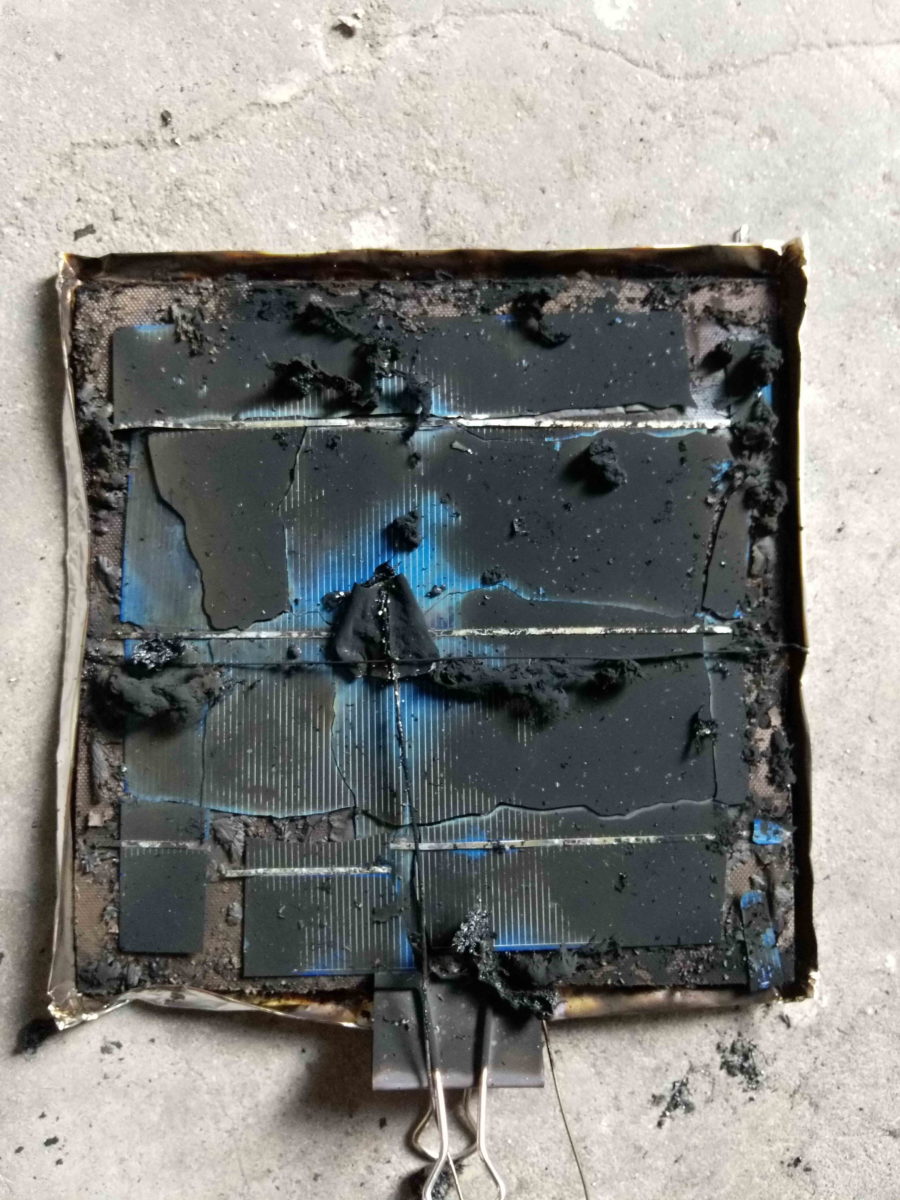A research group from China’s State Key Laboratory of Fire Science has performed experiments on 18cm² thin-film, flexible, polyethylene terephthalate (PET)-laminated PV panels to assess the toxicity of the gases released when they are burnt.
The scientists analyzed the combustion of the panels using a cone calorimeter, a device used for predicting real-time fire behavior and assessing parameters such as ignition time, heat release rate, mass loss and other properties. Equipment limitations, however, meant only the toxicity of CO (carbon monoxide) and CO2 was evaluated, the researchers said.
The device tested has a five-year lifespan and is widely used in applications such as shared bicycles, solar lawn lamps, household or office power supplies and portable power systems. The panel has five layers: PET and EVA films, a polycrystalline silicon slice, another EVA film, and a printed circuit board (PCB). “The polycrystalline silicon wafer is encapsulated by a transparent, light-resistant, tacky and elastic EVA adhesive layer and bonded to the upper PET film and the lower PCB backsheet to form a solar panel,” said the scientists.
Melting points
The Experimental study on burning and toxicity hazards of a PET laminated photovoltaic panel paper – published in Solar Energy Materials and Solar Cells, and reported on the ScienceDirect website – noted the melting point of PET was around 250 degrees Celsius and that of EVA film around 75 degrees Celsius. According to the paper, when the temperature rose, the lower layer of EVA melted before the PET so numerous dense blisters were rapidly generated under the PET and continuously collapsed. “When the flame spreads over the entire surface of the sample it enters the full combustion phase,” the researchers reported. After the fire was extinguished, the burnt device showed residue of blue polycrystalline silicon solar wafer and white glass fibers with the polymers in the EVA, PET and PCB completely burnt.
Popular content
The researchers said although some of the gases emitted were less harmful than CO, four toxic emissions were detected: sulfur dioxide, hydrogen fluoride, hydrogen cyanide and volatile organic compounds. “As far as is known, the poisoning effect of combustion products is more dependent on the burning rate and conditions and not on the chemical composition of the burning materials, which is a critical limit,” stated the study.
“Once a photovoltaic fire occurs in a densely populated area of the city, in addition to the high heat radiation generated by factors such as flashover – which may cause harm to firefighters and surrounding residents – the toxic gases generated by the combustion of photovoltaic panels cannot be ignored,” stated the report.
The researchers added, similar work should be conducted on glass-laminated PV modules as they have a much larger market share.
This content is protected by copyright and may not be reused. If you want to cooperate with us and would like to reuse some of our content, please contact: editors@pv-magazine.com.



By submitting this form you agree to pv magazine using your data for the purposes of publishing your comment.
Your personal data will only be disclosed or otherwise transmitted to third parties for the purposes of spam filtering or if this is necessary for technical maintenance of the website. Any other transfer to third parties will not take place unless this is justified on the basis of applicable data protection regulations or if pv magazine is legally obliged to do so.
You may revoke this consent at any time with effect for the future, in which case your personal data will be deleted immediately. Otherwise, your data will be deleted if pv magazine has processed your request or the purpose of data storage is fulfilled.
Further information on data privacy can be found in our Data Protection Policy.